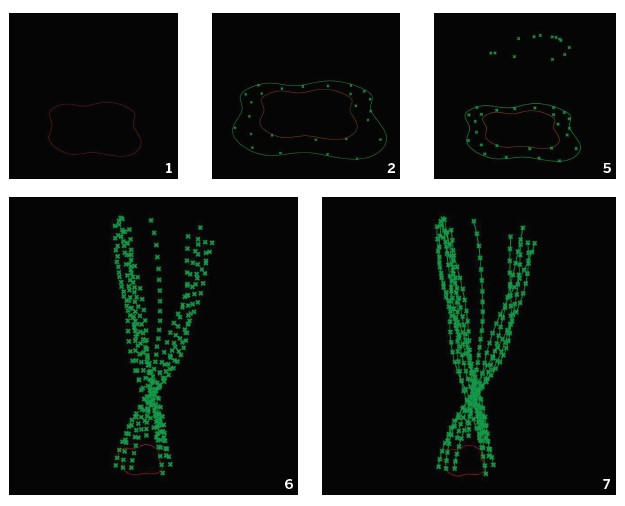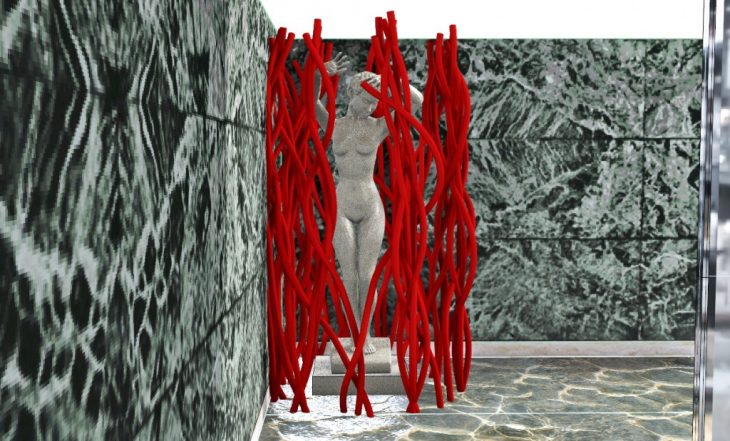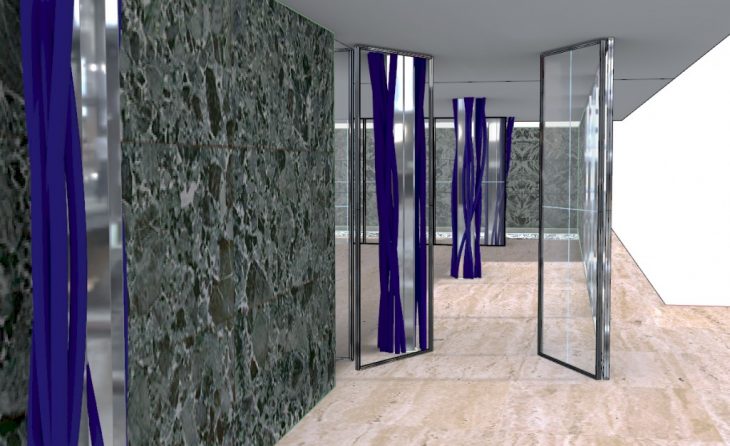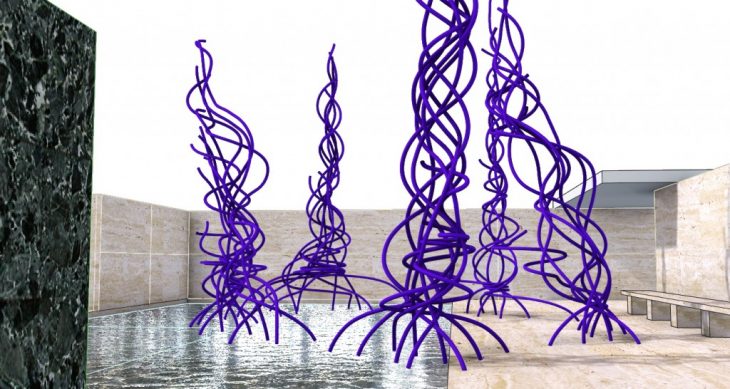
Sea Anemone, Audubon Nature Institute, 2019
Synchronous Spawning is one
of the most common methods of
reproductive growth in the sea.
Many sea organisms like clams,
sea anemones, fan worms, jellyfish
& corals use this method for
reproduction.
Synchronous spawning takes place
when animals release their eggs
and sperm into the water, where
fertilization occurs externally, and
the organisms start growing in
clusters.
Using the concept of recursion,
this principle of natural growth
has been simulated & adjusted to
adapt to a region around which the
growth will take place, thus forming
an enclosed space.
This simulation is valid for any kind
of closed curves and can adapt to
different conditions.
Pseudo Code
1. Make a closed curve.
2. Populate the region with random points.
3. Divide the sets of points into different
groups so that the vectors between these 2
sets of points can be created.
4. Adjust the vector values of the
resulting data according to the amount of
displacement required in each successive
step.
5. Move the original set of points using the
vector values recieved in the previous step.
6. Create a recursive loop. The points keep
propagating in the required direction with
each successive iteration.
7. Interpolate the resulting points. The
interpolated curve will show the growth as
per the propagation of points.

Renders

Form 01

Form 02

Form 03